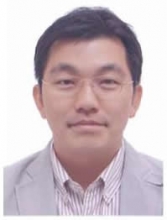ChEMS Seminar: Assembly of Nano/Soft Materials for Controlled Biotransports

Department of Chemical & Biomolecular Engineering/Bioengineering
University of Illinois at Urbana-Champaign
Abstract: Human bodies are highly vascularized to transport oxygen, nutrients and hormones to and from cells residing in tissues and organs. A variety of intrinsic and extrinsic factors can cause occlusion, leakage or rupture of the vasculature, thus leading to tissue ischemia, necrosis and, ultimately, death. To date, extensive efforts have been made to repair or recreate vascular networks by administering therapeutic molecules or transplanting “living” cells that sustainably secrete the therapeutic molecules. However, it is challenging to guide the delivery of biomolecules and cells and to control spatial organization within the target tissue. To this end, we have been developing a series of materials that can regulate transports of these therapeutic molecules and cells of interest. In this talk, I will highlight assembly and biological function of a few materials we developed. First, I will introduce the synthesis of a hyperbranched polymer that delivers systemically transplanted stem cells to inflamed blood vessels (Fig 1a). Second, I will present the 3-D printing of a "living” microvascular stamp that creates microvascular networks with controlled spacing (Fig. 1b) and the in situ patterning of drug-releasing microparticles in a microchanneled hydrogel inspired by the glacial moraine formation (Fig. 1c). In the end, I will discuss assembly of the self-folding hydrogel that allows us to deliver the hydrogel implants in a non-invasive manner (Fig. 1d).


Fig.1 Materials assembled to modulate transports of cells and bioactive molecules
Bio: Hyunjoon Kong is a professor in the Department of Chemical and Biomolecular Engineering and a Centennial Scholar at the University of Illinois at Urbana-Champaign (UIUC). He also holds affiliation with the Department of Bioengineering, Center for Biophysics and Computational Biology, and Neuroscience Program. He received his engineering education from the University of Michigan at Ann Arbor (Ph. D. 2001) and performed post-doctoral research at the University of Michigan and Harvard University. He joined the University of Illinois in 2007. During his academic life, he received the Scientist Development Grant from the American Heart Association, the Career Award from NSF, a Center for Advanced Study Fellowship, UIUC Engineering Dean’s Award for Research Excellence, Centennial Scholarship and Promotion Award. He currently has 120 published papers in various peer-reviewed journals.
Share
Upcoming Events
-
MAE 298 SEMINAR: Biomechanics of Rotator Cuff
-
CBE 298 Seminar: Micro- and Nanofluidic Systems for Molecular Biosensing, Nanotoxicity, and Optogenetics
-
MSE Special Seminar: Architecting 3D Complex Materials for Sustainability
-
MSE Special Seminar: Decarbonizing Industries for a Climate-resilient Future - From Renewable Energy to Sustainable Material Recovery
-
CEE Seminar: BIM and the Digital Twin
